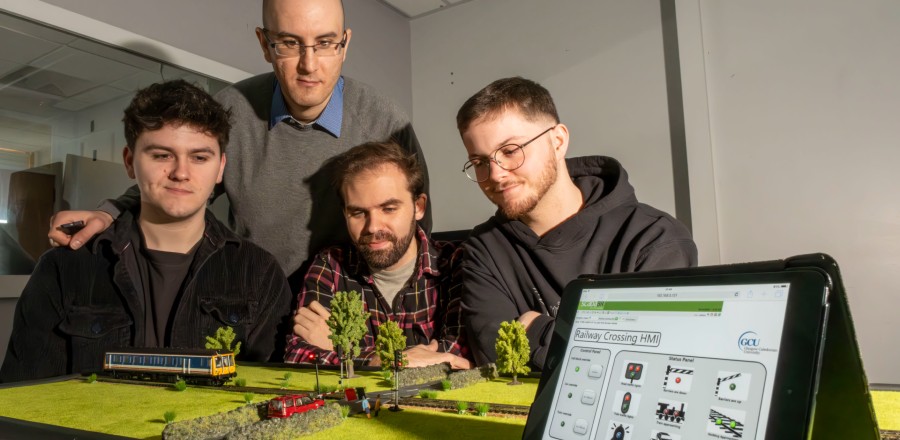Glasgow Caledonian cyber project teaches students how to shield Scotland's rail network

A cutting-edge cybersecurity project developed by Glasgow Caledonian University could be the key to safeguarding Scotland's critical infrastructure from cyber threats.
In a ground-breaking initiative, academics and undergraduates from the University's Cyber Security and Networking Department have unveiled a revolutionary platform aimed at thwarting potential cyber-attacks on the country's rail network.
The project, which received funding from the Smart Technologies Centre, features a unique model trainset controlled by microprocessors and is monitored by a bespoke website, allowing researchers and students to simulate cyberattacks on vital systems such as a level crossing and train sensors.
Dr Salaheddin Hosseinzadeh, who is leading the project, revealed the platform's mission: “Our students hack various elements of this model to see what would be possible in a physical environment. They can manipulate the level crossing barrier and warning lights, for example, or manipulate sensors on the train that alert operators to obstacles in its path. The real-world effects can range from inconvenient delays to mass casualties.”
With recent global cyberattacks on critical infrastructure, such as the Colonial Pipeline in Houston, Texas, Dr Hosseinzadeh said the need for robust cybersecurity measures has never been more apparent. He emphasised the significance of the project in addressing these threats: “The Colonial Pipeline attack left vast parts of the USA without fuel. That is just one example of many recent massive cyber-attacks on worldwide critical infrastructure. By using our testbed, our students can see, first-hand, the effects of such an attack on a rail network. More importantly, having seen what is possible for hackers, the students then learn how to stop these attacks and make the network more robust.
“Therefore, the initiative not only provides hands-on experience for budding cybersecurity experts but also serves as a vital research platform for developing innovative solutions to protect critical infrastructure.
“This is the only testbed of its type in Scotland. Efforts are now under way to document findings and methodologies for submission to a peer-reviewed journal. Our story highlights innovation, collaboration, and the advancement of cybersecurity education, offering potential inspiration for further development and collaboration within the sector.”
Dionysios Voutos, a fourth-year Cyber Security and Networking student who helped build the testbed, said: “From an educational point of view, this is fantastic. Students cannot experiment in a real-life critical infrastructure network because of the potential for error. The testbed gives us the next best experience of putting into practice all that we have learned and allows us to hone our skills in a safe, but realistic, environment. It sharpens us to make us industry ready upon graduation.”
Plans are now under way to digitise the model, making it accessible to remote learners, and to collaborate with rail-industry experts to further enhance its capabilities and realism.
CAPTION FROM LEFT: Bradley Cumming, a fourth-year Cyber Security and Networking student; Dr Salaheddin Hosseinzadeh; Dionysios Voutos; Darren Barrie, a fourth-year Cyber Security and Networking student.
